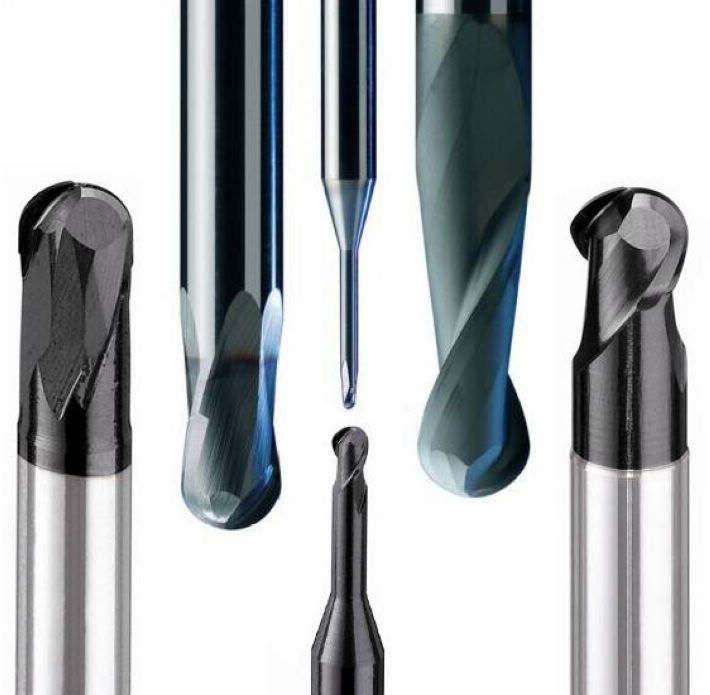Difference between NC tool and common tool
(1) high precision production quality
In order to process the surface of high-precision parts stably, more stringent requirements are put forward for the manufacturing of cutting tools (including tool parts) in terms of accuracy, surface roughness, shape and position tolerance, etc., especially for indexable tools. In order to ensure the repeated accuracy of the blade tip (cutting edge) after the rotation, the dimension and precision of the key parts such as the cutter body, the cutter groove and the positioning parts are required The degree and surface roughness must be strictly guaranteed. Together, in order to facilitate the tool setting and measurement in the tool setting instrument, the machining accuracy of the base surface should also be ensured.
(2) optimization of tool structure
Advanced tool structure can greatly improve cutting power. For example, high-speed steel CNC milling tools have more wave edge and large helix angle structure in structure, while carbide indexable cutter has selected internal cooling, blade vertical installation, module replaceable and adjustable structure, while internal cooling structure is not suitable for general machine tools.
(3) the wide use of high quality data of cutting tools
In order to prolong tool life and improve tool strength, high strength alloy steel is selected for tool body data of many CNC tools, and heat treatment (such as nitriding and other surface treatment) is carried out to make it suitable for large cutting parameters, and the tool life is also significantly improved (generally, medium carbon steel after quenching and tempering is generally selected). In terms of cutting edge data, CNC tools use more new grades of cemented carbide (fine or ultra-fine particles) and superhard tool data.

(4) reasonable selection of chip breaking groove
The cutting tools used in CNC machine tools have strict requirements for chip breaking groove. When machining, if the cutting tool is constantly chipping, the machine tool can not work normally (some CNC machines and cutting are carried out in a closed state). Therefore, whether CNC lathe, milling, drilling or boring machine, the reasonable chip breaking groove type for different processing data and procedures is optimized, so that the chip breaking can be stable during cutting.
(5) coating treatment of tool (blade) surface
The appearance and development of tool (blade) surface coating skills are mainly due to the emergence and development of CNC tools. Because the coating can significantly improve the hardness of the tool, reduce friction, improve cutting power and service life, more than 80% of all kinds of cemented carbide indexable CNC tools are selected coating skills. The coated cemented carbide blade can also be used for dry cutting, which also creates favorable conditions for environmental protection and green cutting.
Source: Zhongshan tungsten steel milling cutter http://yaoclub.cn
-
10-12
What are the causes of chip accretion on NC tools?
The reason is that the chip bottom metal is embedded in the micro uneven peak valley on the front cutter surface due to the large down pressure in the part close to the cutting edge, forming a gap free metal to metal touch, which is called the bonding area. In the bonding zone, there will be a thin layer of metal data accumulated on the rake face at the bottom of the chip. The metal data of this part of the chip is severely deformed and strengthened at the appropriate cutting temperature. With t
-
10-12
What are the wear types of tungsten steel milling cutters?
Abrasive wear machining materials often have some very hard particles, these particles will form grooves on the surface of the tool, which is the grinding loss. All surfaces are worn, especially the rake face. In addition, although the wear of hemp occurs at various cutting speeds, the wear caused by other reasons is not obvious due to the low cutting temperature at low cutting speed, so it is mainly the abrasion of abrasive materials. The lower the tool hardness is, the more serious the grindin